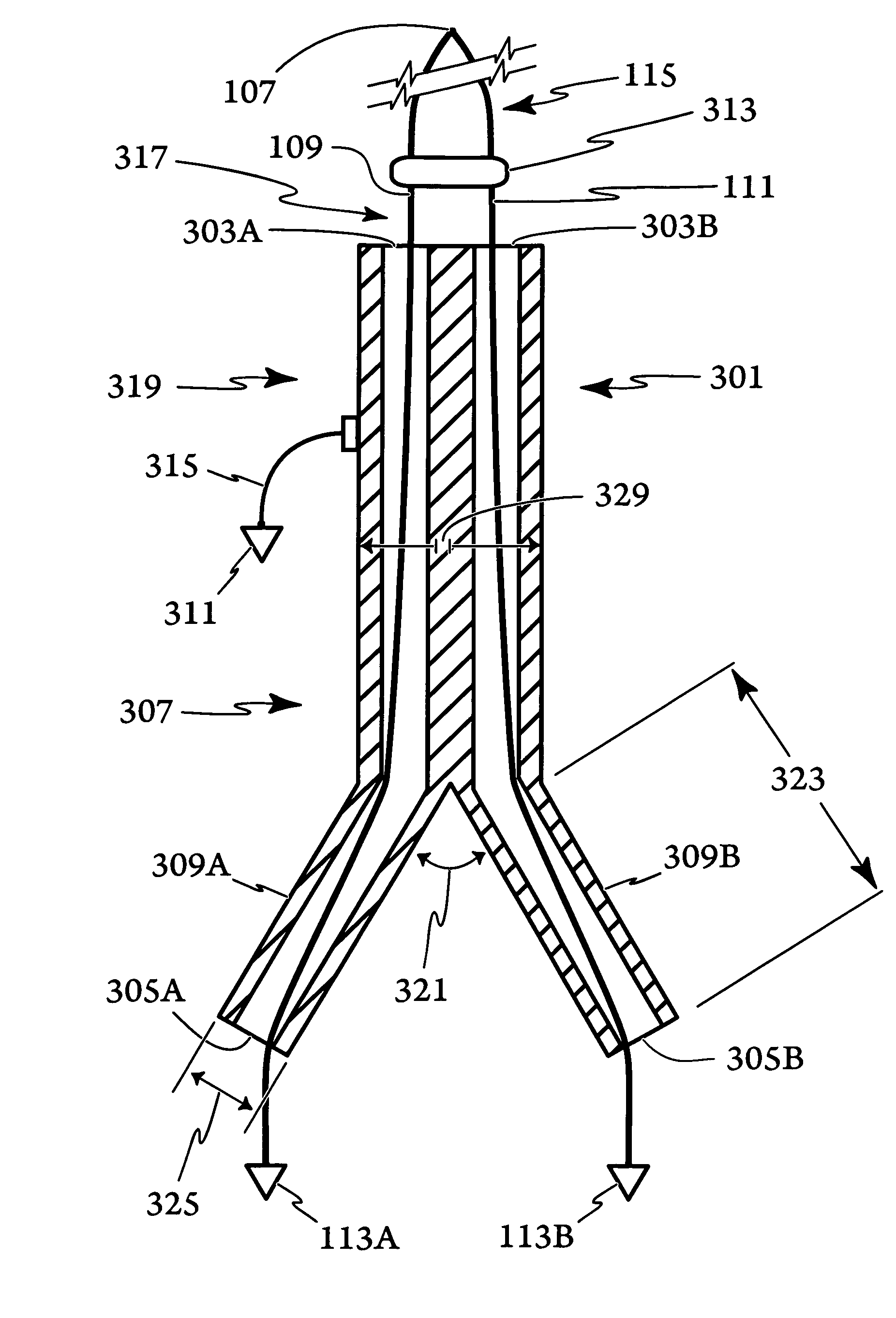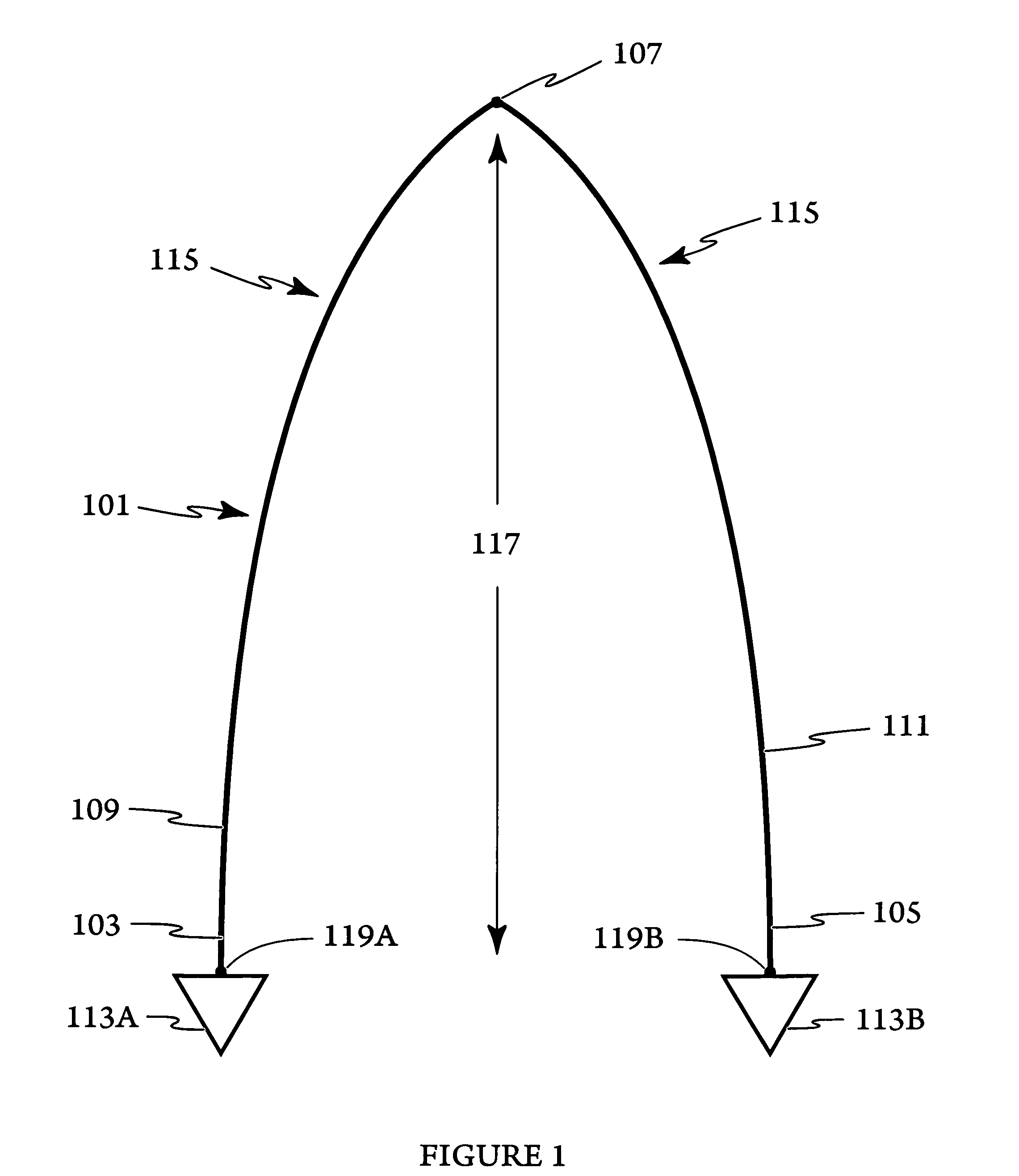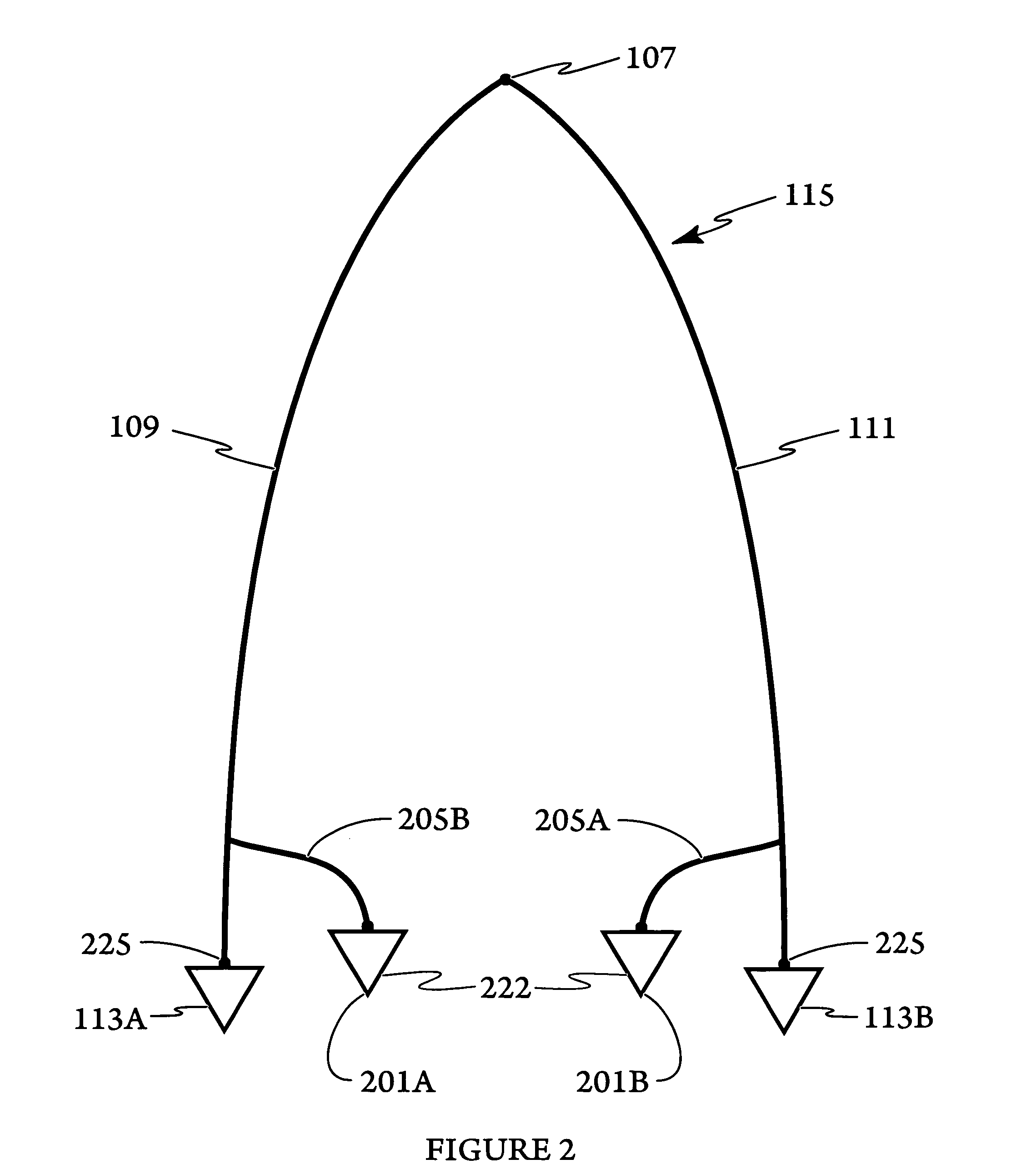Dressing aid
a technology for dressing and knees, applied in the field of dressing aids, can solve the problems of limited flexibility of the lower back or knees, inability to accomplish this seemingly simple, but very necessary task, etc., and achieve the effect of limited flexibility
- Summary
- Abstract
- Description
- Claims
- Application Information
AI Technical Summary
Benefits of technology
Problems solved by technology
Method used
Image
Examples
example 1
[0034]FIG. 1 illustrates the simplest configuration of the invention. The device 101 of FIG. 1 comprises a length of connective material, cord or strap material 115 with a first end 103, a second end 105, and a mid-point 107. The mid-point divides the connective material, cord or strap material, 115 into first half-length 109 and a second half-length 111. The length 117 of each half-length 109 and 111 is equal. The length 117 varies from 3 feet (1 meter) to over 5 feet (2 meters), or the overall length of the cord or strap 115 varies from less than 6 feet (2 meters) to about 10 feet (3 meters) although these values are reasonable examples, they do not constitute minimum or maximum values and are not limitations on the invention.
[0035]The device further comprises a first member of a first of a pair of grips 113A and a second member of a first pair of grips 113B. The first member of the first pair of grips 113A is firmly attached to the first end 103 of the cord or strap 115 and the s...
example 2
[0040]The simple configuration of FIG. 1 is modified in FIG. 2 to include a first member 201A of a second pair of grips and a second member 201B of the second pair of grips. The first member of the second pair of grips is attached to the cord or strap 115 by a short (1 to 3 inch or 2.5 to 7.5 cm) section of cord (or strap material) 205A positioned such that the bottom edge line 222 (jaw line) of the first member of the second pair of grips is positioned slightly above the top 225 first member of the first pair of grips. The second member of the second pair of grips 201B is similarly attached above the second member of the first pair of grips.
[0041]Functionally, the device is comparable to the function of the device as described for FIG. 1, except as the first step the first and second members of the second pair of grips are attached to or near the waist band of an undergarment generally as described for FIG. 1, and the first and second members of the first pair of grips are attached...
example 3
[0043]FIG. 3 illustrates an additional configuration of the device adapted primarily to the use of cord in which the cord passes through a hand piece body 307. As illustrated for simplicity, this configuration is illustrated only with a single pair of grips. One skilled in the art recognizes readily that a second pair of grips can be added following the discussion of FIG. 2 without changing the intent or complexity of the invention.
[0044]The hand piece 307 comprises a handle element 319 with length 350 and a first leg 309A and a second leg 309B. The legs are of equal length 323. The physical dimensions of the hand piece are not critical with respect to the function of the invention as described with respect to FIG. 1. The dimensions may vary quite widely more to accommodate individuals with limited manual dexterity. By way of example and not limitation, the diameter 329 of the handle element varies from about approximately 1 inch (2.5 cm) to 3 inches (7.5 cm). The length of the hand...
PUM
 Login to View More
Login to View More Abstract
Description
Claims
Application Information
 Login to View More
Login to View More - R&D
- Intellectual Property
- Life Sciences
- Materials
- Tech Scout
- Unparalleled Data Quality
- Higher Quality Content
- 60% Fewer Hallucinations
Browse by: Latest US Patents, China's latest patents, Technical Efficacy Thesaurus, Application Domain, Technology Topic, Popular Technical Reports.
© 2025 PatSnap. All rights reserved.Legal|Privacy policy|Modern Slavery Act Transparency Statement|Sitemap|About US| Contact US: help@patsnap.com



